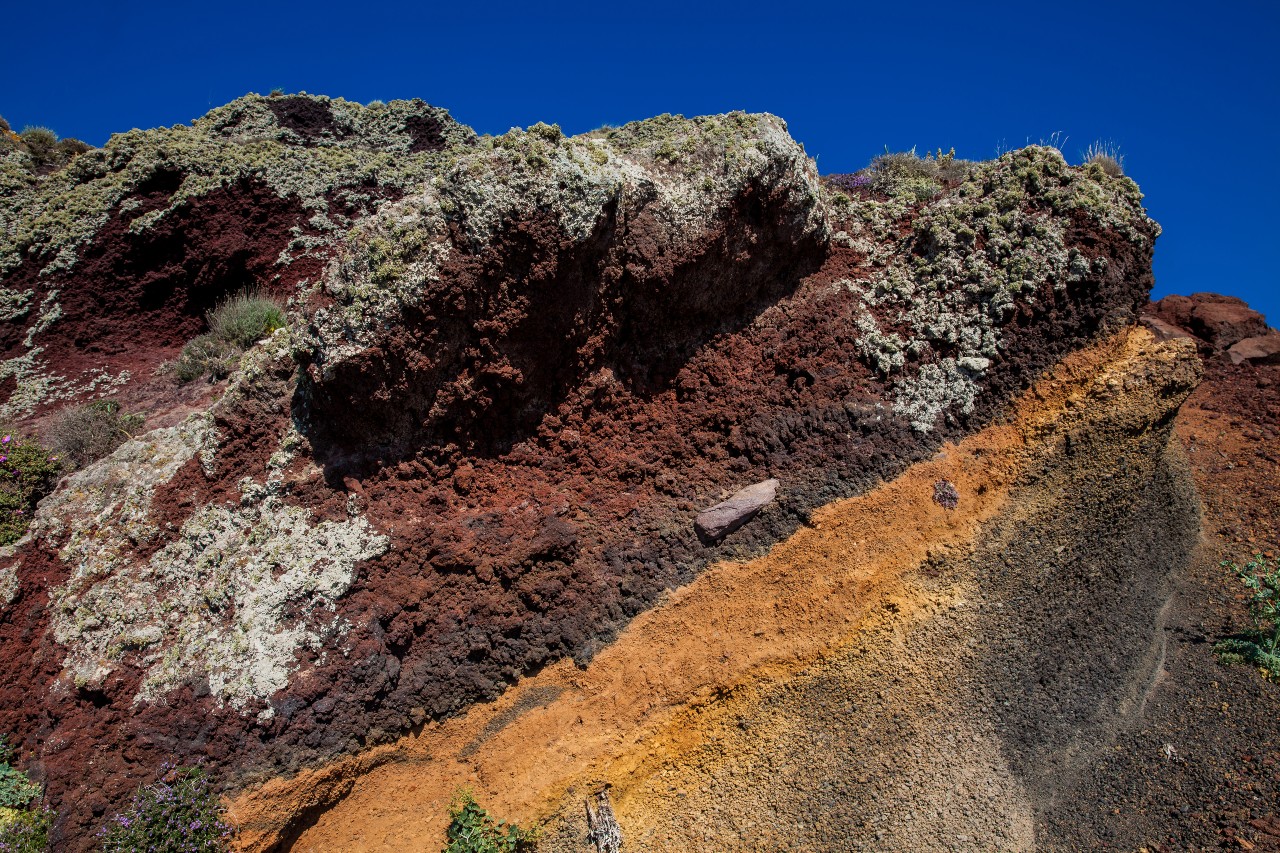Volcanic Agriculture of Europe is an international project sponsored by the European Union aimed at promoting the Soave, Soave Superiore, Lessini Durello, Santorini and Monte Veronese PDOs. Protected Designations of Origin supported by the Italian wine Consortium of Soave and Recioto di Soave, the Consortium of Lessini Durello, the Greek Consortium Union of Santorini Cooperatives – Santo Wines and the Consortium for the protection of the Monte Veronese cheese.
Volcanic Agriculture of Europe aims to promote, emphasize and make consumers know about the extraordinary characteristics of a form of agriculture and dairy production that differ from the rest thanks to the volcanic origin of the soil. Distinct terroirs that can be separated by thousands of kilometres but that have developed a common predisposition to quality, based on similar pedoclimatic characteristics, geological history, exposure and altimetry. Distinctive traits that can be found in the PDOs of these areas and that are expressed through a natural tendency to have persistent flavours, marked minerality, longevity and incredible complexity of tastes and aromas. The project will be developed over a three-year period 2020-2022 and will focus on supporting the abovementioned PDOs and, in general, enhance consumer awareness of the quality of products labelled with quality protection marks established by the European Union.
THE VOLCANO
Volcanic environment is one of the most difficult and important “areas of applicability” of the thousand-year-old dialectic between man and nature, in a mutual exchange of energy and experience: the fertility of the earth and the difficulty of cultivating it; the generosity of the elements present in the soil and the extreme heights, where thousands of backs and hands have bent over in order to plough and build terraces, that today are an integral part of a landscape endowed with marvellous beauty.
From vineyards rising on volcanic soil come wines and products that are intense, persistent and by no means aggressive, and whose aging potential can enhance aroma, complexity and persistence on the palate. This has been possible because lava movement over the centuries has been able to counteract the mineral acidity of the soil, generating lands that can yield raw materials of undisputed quality.
Soil
Volcanoes are often located near important tectonic faults, along the borders of which there can usually be found soil with heterogeneous chemical composition due to the vertical displacement of buried layers towards the surface. Similarly, there are also soils that have formed from underwater volcanic eruptions and are the result of the mixing of volcanic matrices with marine deposits, or those that originated from glaciers containing numerous erratic rocks and finer particles of volcanic origin. Volcanic slopes are often difficult to cultivate due to the hardness of the rocks or the unevenness of the terrain, which make the cultivation of these territories a valiant feat. Oftentimes, the winegrowing methods practiced here are the result of ages-old work of shaping the land by constructing majestic terraces, which make these landscapes true works of art.
The definitions of being the “machine or factory of the Earth” given to volcanoes in the Anglo-Saxon scientific world perfectly describe the role they have played in the formation of our planet. We can say that the Earth was born from a prolonged sequence of violent volcanic eruptions that have never stopped, even when the cause that generated them has changed (for example, the tectonic activities of the terrestrial crust brought by the continental drift), but above all, they have manifested with lesser intensity compared to the beginning.
Usually, the word “volcano” is associated with the image of a pyramid-shaped mountain, bare of any kind of vegetation, with its peak covered in snow and a plume of smoke coming out of it. Although this is a very common example, there are many and different types of eruptions that may form volcanoes of distinct morphology. Without going further into detail, in order to understand the types of soil which originate from them, we must mention the eruptions that mainly eject ash and pumice, which do not deposit on the slopes of the volcano due to their light weight, because these are dispersed and are subjected to erosion. Soils that form from these pyroclastic deposits are deep, light, lacking in structure and in organic matter, and sometimes presenting remains of lapilli and volcanic bombs. Stratified pyroclastic materials may solidify over time and produce volcanic tuffs, which form sandy and coarse soils that are highly rich in minerals during the following stages of erosion. Whereas, volcanoes that are made up of cooled lava flow have more definite slopes and generate soils with dark colour, often superficial, tedious to transform into a type of soil apt for agriculture and rich in clay.
There is a very close relation between the volcanic activity, the physical and chemical characteristics of the magma and the type of soil that will be generated. This is because volcanic soils have different origins. From a chemical point of view, magma is an extremely complex system that changes its composition not only for its origin, but also by being in contact with cold rocks, since the crystals that are formed take away some of the magma’s components. Furthermore, pressure and temperature alter the level of gas present in the magma, which may cause significant changes in the properties of the magma itself.
Even the stage of cooling, particularly the speed at which this occurs, has a strong impact on the structure of the rocks. If cooling happens slowly inside the crust, as in the case of the resurgence of magma, intrusive rocks are formed, characterized by the presence of small yet visible crystals (for example, granite). But if magma resurgence is fast, and cooling occurs on the Earth’s surface, the solid mass is vitreous and the crystals are very small. This is the case of explosive eruptions. Chemically, the main element present in magma is silica (from 50 to 70%), followed by aluminium oxide, magnesium, iron, sodium and potassium oxides, and, in terms of reaction, they can be basic, acidic and neutral, depending on the content of silica. The results of subaqueous effusive activity is a distinctive trait since it pertains to the formation of soil in Soave and of porphyry in Alto Adige and in Valle di Cembra. In the marine environment, pressure and temperature slow down the explosive stage, cooling happens abruptly and the part of the magma in contact with water is vitreous. So-called pillow lavas are formed, visible in numerous locations in the area of Soave. Fragments of this vitreous layer transform into a yellowish and clayey material rich in iron oxides, often present in many volcanic areas.
Another particular phenomenon is the one that led to the formation of the Euganean Hills, whose first eruptions concurred with those in the area of the Lessini Mountains and in Trentino, during the early Eocene, about 50 million years ago, while the second cycle took place about 20 million years later with the emission of basaltic lava under the sedimentary rocks of the seabed, which have risen to form laccoliths that are shaped like conical domes, then corroded by erosive phenomena that have created the current landscape of the Euganean Hills.
This overview on eruptive phenomena aims at highlighting the great variety of soils that derive from these events. The differences among volcanic soils pertain to the physical structure, from the lightest ones like those made of pumice in the island of Salina to the heaviest and most clayey ones in the vineyards of the Lessini Mountains and Soave, to the tuffs of Montefiascone and the sands of Frascati; and the reaction, from the basic ones drawn from the erosion of basalts, to the neutral and subacidic ones made up of porphyry and granite, respectively from Terlano and Gallura, to those rich in skeletal remains of the Etna and the ashes of the vineyards of Vesuvius. The differences in chemical composition are also very important, especially for the presence of potassium and other microelements. No other soil with limestone, morainic or metamorphic origin present a similar abundance of minerals.
Soil made up of or originating from volcaniclastic elements stretches over an area of about 124 million hectares all over the world. Thus, this type of soil covers about 1% of the surface of the Earth, and provides livelihood to 10% of the world population: this data clearly demonstrates the idea of “fertility” oftentimes associated with lands of volcanic origin all over the world.








